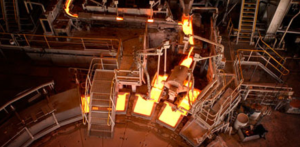Rio Tinto plans to sell subsidiary Coal & Allied Industries to China’s Yancoal for up to $US2.45 billion ($3.23 billion).
Coal & Allied is Rio Tinto’s thermal coal division in the Hunter Valley region of New South Wales. Its assets include majority shares in the Hunter Valley Operations mine, the Mount Thorley mine and the Warkworth mine. The three operations produced 25.9 million tonnes (Mt) of thermal and semi-soft coking coal in 2016, of which 17.1Mt were Rio Tinto’s share.
The proposed deal with Yancoal involves a $US1.95 billion upfront payment and the potential for a further $US500 over five years. Once the deal is completed, Rio Tinto will also be entitled to potential royalties.
Rio Tinto chief executive Jean-Sebastien Jacques said the proposed sale was consistent with the company’s strategy of reshaping its portfolio to ensure the most effective use of capital.
“We are confident that Coal & Allied will continue to contribute to the NSW economy and the communities of the Hunter Valley under a new owner,” Jacques said.
Rio Tinto has announced or completed at least $US7.7 billion of divestments since 2013, it said in a statement. The company also restructured the ownership of the Coal & Allied assets with joint venture partner Mitsubishi Development in 2016.
Yancoal, which is 78 per cent owned by China’s Yanzhou Coal Mining, would expand an Australian portfolio that already includes seven sites across Queensland and NSW with the transaction.
The ASX-listed Chinese company intends to fund the transaction through a capital raising and entitlement offer of its shares.
Yancoal chairman Xiyong Li said the Coal & Allied deal would be a transformative acquisition for the company and form the basis of its future growth in Australia.
“Via the acquisition of Coal & Allied’s high quality asset portfolio, we will be delivering substantial cash flows to the company, quality coal products and long-term relationships with end-users in key global markets,” he said.
The transaction must still be approved by the Australian Government, NSW Government and Chinese regulatory agencies.



